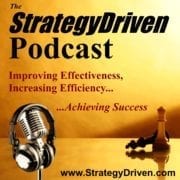What Should Coaches Be Listening For?
A coach’s job is to facilitate potential change, usually by asking questions to identify the components of the problem and decide between solutions while reinforcing the changes and maintaining a trusting relationship. To achieve the excellence that all coaches seek, it’s necessary to avoid the listening filters that could prejudice the interaction, such as:
Bias. By listening for specifically for elements of the stated issues – problems, hopes, missing skills or motivation – a coach will merely hear what she/he recognizes as missing. If there are unspoken or omitted bits, if there are patterns that should be noticed, if there are unstated historic – or subconscious – reasons behind the current situation, the coach may not find them in a timely way, causing the coach to begin in the wrong place, with the wrong timing and potentially creating mistrust with the client.
Assumptions. If a coach has had somewhat similar discussions with other coaches, it’s possible that s/he will make possibly faulty assumptions or guesses that do not take into account the coaches specific, historic, unconscious, and certainly idiosyncratic challenges.
Habits. If a coach has a client base in one area – say, real estate, or leadership – s/he may enter the conversation with many prepared ways of handling similar situations and may miss the unique issues, patterns, and unspoken foundation that may hold the key to success.
As I write in my new book What? Did you really say what I think I heard? the problem lie in our brains. Once we listen carefully for ‘something’, we restrict all else that’s possible to hear as our brains interpret the words spoken according to our bias, often missing the client’s real intent, nuance, patterns, and comprehensive contextual framework and implications.
To have choice as to when, whether, or how to avoid filtering out possibility, we must disassociate – go up on the ceiling and look down – and remove ourselves from any personal biases, assumptions, triggers or habits, enabling us to hear all that is meant (spoken or not). In What? I explain how to trigger ourselves the moment there is a potential incongruence. For those unfamiliar with disassociation, try this: during a phone chat, put your legs up on the desk and push your body back against the chair, or stand up. For in-person discussions, stand up and/or walk around. [I have walked around rooms during Board meetings while consulting for Fortune 100 companies. They wanted excellence regardless of my physical comportment.] Both of those physical perspectives offer the physiology of choice and the ability to move outside of our instincts. Try it.
About the Author












Leave a Reply
Want to join the discussion?Feel free to contribute!